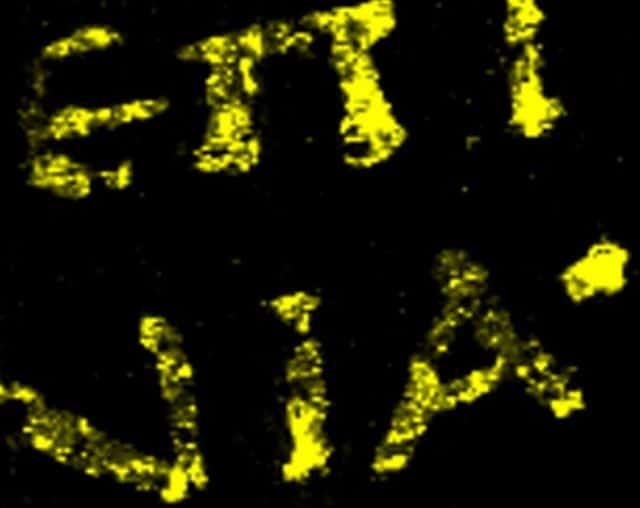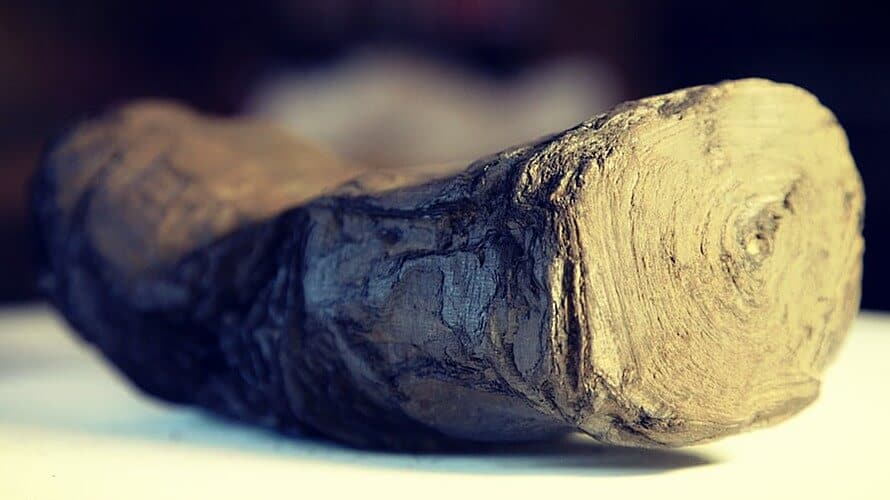In the image above, you can see the charred remnants of a papyrus found during the excavations of the ancient Roman city of Herculaneum. These findings came after the enormous eruption of Vesuvius in 79 AD which buried the city under tons of ash and lava.
Charred Herculaneum Papyri: discovering Roman life through the Library of the Villa of the Papyri
These charred papyri were found in the “Papyri’s Village”, a luxurious Roman house belonging to Lucio Calpurnio Pisón, Julius Caesar’s father-in-law which was discovered by the German archaeologist Karl Jakob Weber in the 18th century.
The town’s library contained more than 1,700 burned papyri which have been the subject of countless attempts at deciphering over the years.
The importance of these findings cannot be underestimated, since these papyri are a valuable source of information about Roman life and culture in imperial times. With the help of modern technologies, experts have managed to decipher some of these documents which have allowed a better understanding of Roman society at the time.
Calcined papyri? A library on fire!
At first, these charred papyri looked like nothing more than burned logs. The first explorers seized them to use them as firewood or torches. However, upon discovering that the logs belonged to Pisón’s extensive philosophical library, several teams of scientists set out to unravel their contents.
Since the 90s, experts have used infrared light to advance the deciphering of these manuscripts. But in January of last year, researchers at the ESRF (European Synchrotron Radiation Facilities) achieved something impressive: reading parts of the burned scrolls using X-ray rendering techniques, a true sci-fi achievement.
The work did not stop there and now, the European Synchrotron brings us surprising news.
Surprising discovery: Ancient papyri contained lead in their ink, according to a study in PNAS
The results of research published in the journal Proceedings of the National Academy of Sciences (PNAS) have revealed a surprising fact about the ink used in ancient papyri: it contains lead.
This discovery has perplexed experts in the field, who until now believed that the use of this additive in writing had not begun until several centuries later.

The discovery which has been described as a small revolution opens the door to new techniques for unveiling the contents of ancient papyri. The researchers used the X-ray fluorescence technique to analyze the traces of lead present in the ink, thus obtaining the best results to date.
In addition, research has also revealed that the texts are written in two lines, a writing rule that was believed later and that was thought to have been introduced for the first time in the Middle Ages.
The presence of lead in ink is a fortunate discovery that will make it easier to read many old papyri. This finding will undoubtedly have a significant impact on the understanding of ancient writing and on the history of writing in general.
The Pison Library: Millenary Discoveries That Could Revive the History of Ancient Literature
The Pison Library, a collection of ancient papyri that spans several periods, has shed light on important discoveries. Although not all texts contain lead in the ink, the finding is significant after years of extensive research.
Inside, hidden under charred layers, there are even more treasures, including possible lost works by authors such as Epicurus and Philodemus de Gadara. If they can be recovered, these works could rise from the ashes like the phoenix and revive the history of ancient literature.





